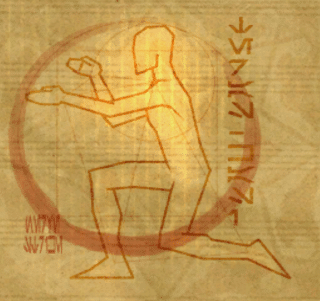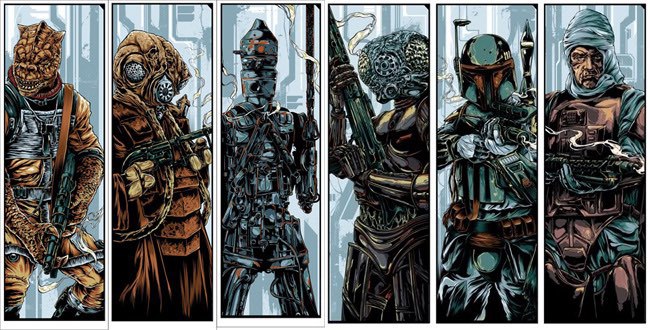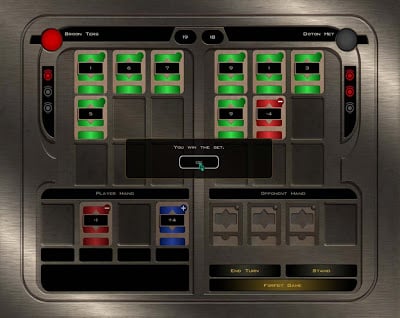Spice was slang for various mind-altering drugs. Varieties included ryll and the strongest (and most expensive), glitterstim. The planet Kessel was rich with these spices, which were harvested from dangerous mines, at one point in history by slave labor. Sevarcos II, Rori, Ryloth, and Troiken were other sources of spice. The word could also refer to non-narcotic herbs and minerals used to give foods or drinks flavor. History Spice was mined on Kessel by criminals. Since Kessel lay within the Maw Cluster, if a prisoner were to escape (very unlikely under Imperial rule) they would not likely go far because of the black holes. The spice found on Kessel was glitterstim, one of the most prized spices in the galaxy. This particular spice was created by a species of energy spiders that would spin the spice into webs. Any unlucky miner that came into contact with one of these creatures…
How stuff works
How stuff works: Unknown Regions
The Unknown Regions, Unknown Space, Unknown Sector, or Unknown Territories was the collective term for all regions of the galaxy not formally charted; it differed from Wild Space in that Wild Space was usually minimally charted, but not fully explored. The Unknown Regions was broadly defined as areas not connected with the skein of reliable or well-known hyperspace routes spanning the galaxy, did not look to Coruscant as the ultimate center of civilization, or were not under the broad hegemony of the Galactic Republic before the Galactic Civil War. Beyond the region’s outer edge lay the hyperspace disturbance beyond the edge of the galaxy. History he reach of civilization extended at least nominally to the edge of the galactic disk—for instance, the territory of the Corporate Sector extended to the end of the Tingel Arm. The galactic disk and some satellite galaxies were mapped well enough that the omission of…
How stuff works: Teräs Käsi

Teräs Käsi, or “steel hand” in Basic, was an unarmed combat discipline. It was created sometime prior to 3,678 BBY on the planet Bunduki by the Followers of Palawa, refugees of the planet Palawa, which was devastated earlier in a war somehow involving the Jedi Council. The Followers of Palawa created Teräs Käsi solely to defeat Jedi, and presumably, ensure that another world would never be destroyed by the actions of the Council. The Followers of Palawa studied The Force and Midi-chlorians, even though they themselves where not necessarily force sensitive. Teräs Käsi, enabled a user to develop extreme speed, and an aptitude for anticipating strikes, most notably shown by clone assassins. In addition to this, Teräs Käsi taught non force sensitives how to close their minds to Jedi and Sith, thus protecting themselves from mental based attacks. Teräs Käsi also had a developed set of fighting skills, and Nine…
How Stuff works: Bounty hunters

Bounty hunters were mercenaries for hire who tracked down and captured or killed anyone with a price on their head, although they were also known for doing nearly anything for the right price including the protection of clients. The best bounty hunters were very well armed and had very effective weapons, making them even more dangerous. There were, however, plenty of incompetent specimens throughout the galaxy, lacking any real skill but wishing to get rich quickly or simply seeking adventure. Bounty hunters usually worked alone, although they sometimes did form partnerships. Partnering with a bounty hunter could be very dangerous business, though, as they typically valued their personal gain—and survival—above that of their companions. Despite their fierce independence, their reputation as “Jedi-killers” made them valuable tools of the Galactic Empire. There were strong rivalries between bounty hunters and smugglers, most obviously seen between Boba Fett and Han Solo, respectively. Organization…
How Stuff works: Mandalore

Mandalore—or Mand’alor in it’s truest rendering and which meant “sole ruler” in Mando’a—was the title of the leader of the Mandalorians. The title originated with the mythical figure Mandalore the First, whose warriors were said to have conquered the planet of Mandalore. Eventually, the term came to be applied to the Mandalorian leaders, with the first known bearer of the title being Mandalore the Indomitable, who reigned during the Great Sith War. The last known person to claim the title of Mand’alor was Yaga Auchs, who kept the Mandalorians on Mandalore during the Sith–Imperial War. The title was notable for surviving several thousand years, through considerable Mandalorian hardships. Despite several lost wars, infighting and the emergence of the “Mandalorian mercenary” phenomenon, at least seventeen Mandalorians declared themselves Mand’alor throughout the years, with varying degrees of success in their attempts to lead the Mandalorian clans. History When the Taung species were…
How stuff works: Pazaak

Pazaak, an ancient game dating back to Old Republic times, was a popular card game in which the goal was to reach 20 without going over, or at least come closer to it than the opponent. The player with the nearest sum to the number 20 won the round, and the player who won three rounds won the match. If in one round the scores of the two players were equal, the round was not counted at all. Gameplay There are three different decks in pazaak: the main (or “table”) deck, composed of cards numbered 1-10 (the total cards in this deck is unbound, though it tended to have four of each number). There was also one side deck for each player in the game. These decks would be assembled by the players themselves and had to have exactly ten cards.At the beginning of the game, each player would randomly…
How stuff works: Hyperspace

The blue tunnel of hyperspace travel. Hyperspace is the alternate state of existence used by starships to achieve faster-than-light travel. It was a phenomenon not completely understood by scientists; it was alternately described as a parallel universe, an extra dimension of space, an alternate mode of physical existence, or simply the universe as viewed traveling faster than the speed of light. To hyperspace was also a verb in Basic, as in phrases like “You are required to hyperspace back to the fleet when you complete the mission.” Technical background Normally, baryonic matter obeys physical principles of relativity: they increase exponentially in mass as they approach the speed of light, requiring more and more energy to approach it, and thus always remain below this threshold. Tachyonic matter, on the other hand, existed solely above the speed of light, and could not pass below said threshold. Hyperdrive technology allowed sentients to break…

